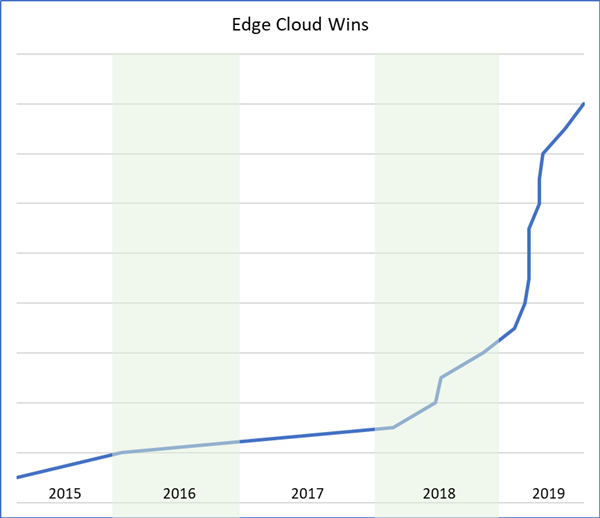After working on network functions virtualization (NFV) for seven years, I’m happy to see it succeeding in the marketplace. Why has it taken so long, what’s changed, and why do I say it’s winning?
Back to the beginning: Why did we start down this path?
The driver for NFV was to bring the power of the cloud to the telco network. Specifically, telcos wanted to be able to leverage the technologies that were enabling rapid growth by the cloud providers (e.g., Amazon, Azure, Google and IBM) and over-the-top players (Netflix, Facebook, etc.), including:
- Breaking open single-vendor silos and separating software features from the underlying hardware
- Developing software-centric services using new methods like agile development and DevOps
- Utilizing standard servers and riding Moore’s Law
- Supporting choice of best-of-breed and open source software
- Realizing new commercial models such as pay-as-you-go and try-before-you-buy
- Delivering dynamic services under end-user control
I mention these points because it’s worth remembering why NFV is important, and why we have been working hard to bring its benefits to service providers and enterprises.
We have closed the gaps
To make NFV work, we first had to close the gaps related to economics and performance. We had to make software virtual network functions (VNFs) work on commercial off-the-shelf (COTS) servers so that we could deliver telco-grade services. And the business case had to work.
We have solved those problems.
But the telco network is not the data center. We provided openness and choice, but we also had to support networking and operations. We also had to add operational features like zero-touch provisioning (ZTP), service chain management, multiple access network options (Layer 2, Layer 3, LTE), service monitoring, troubleshooting, and software management – all to enable NFV deployment at scale.
We have provided those features.
But there was another problem. Service providers had to make the shift from today’s hardware-centric services and organizational silos to cloud-centric services and cross-functional teams. This has not been easy, but innovative operators like Verizon, Colt, TPx, Singtel, and others have made this change. They are now using NFV to deploy universal CPE (uCPE) and deliver dynamic services to their customers, including managed SD-WAN and firewall, along with other innovative services.
The drivers are stronger
The technology drivers I mentioned above are still in play. But others have emerged:
- Customer demand: Customers are moving their workloads to the cloud, and they are adopting agile software development. They expect delivery of their telecommunications services to be dynamic and performed in a cloud-centric manner – not using closed appliances.
- Competition: Based on the advantages of virtualized services, and the customer demands above, innovative operators have started to deploy virtualized services. The operators who don’t are at a competitive disadvantage, and they are starting to lose business.
- Platform for innovation: NFV and uCPE are a fantastic way to deploy today’s services. They also provide a platform for innovation. Operators who deploy these technologies are building a path to tomorrow’s applications such as internet of things, artificial intelligence, machine learning, augmented and virtual reality, and 5G.
The proof is in the pudding
After years of hard work, we are seeing the fruits of our labor. And it is showing up in the form of customer wins. The chart below shows ours wins at service providers and large enterprises for ADVA’s uCPE solution.

As shown, things were progressing slowly until the second half of 2018. Since then, our business has exploded.
We have announced some of these wins, such as at Verizon, Colt, TPx and Masergy. Other announcements are coming soon. But the punchline is that things are happening now.
The time is now!
Innovative service providers and enterprises realize that NFV and uCPE have matured to the point where they can be the basis for innovative services. These users are selecting solutions that allow them to realize the benefits of the cloud, including openness, software-centric development, and new commercial models.
Don’t be left behind. Stop talking about uCPE and start deploying. At ADVA, we can help.
